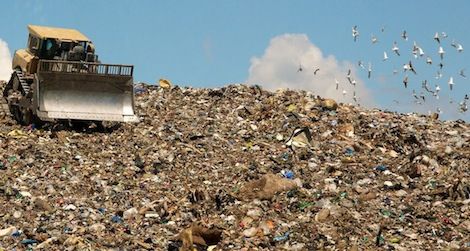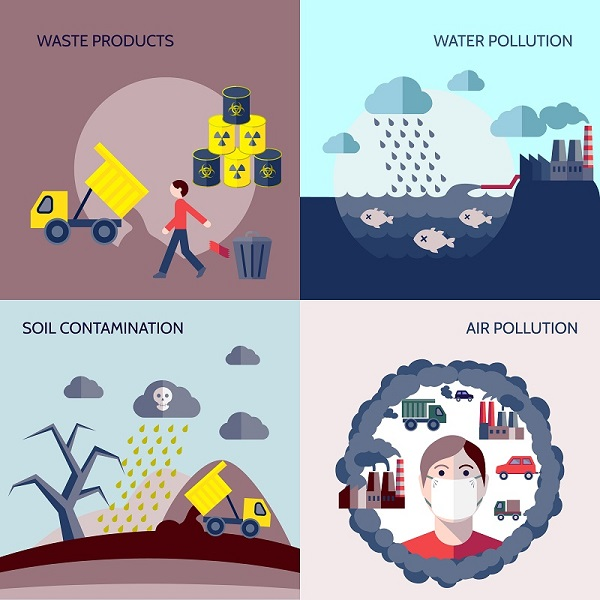Think Before You Trash it
Think before you trash it!!
 Managing our waste is a big problem in our world today. The increasing volume and complexity of waste associated with the modern economy is posing a serious risk to ecosystems and human health. Every year, an estimated 11.2 billion tons of solid waste is collected worldwide and decay of the organic proportion of solid waste is contributing about 5 per cent of global greenhouse gas emissions. Every year, an estimated 11.2 billion tons of solid waste are collected worldwide. Of all the waste streams, waste from electrical and electronic equipment containing new and complex hazardous substances presents the fastest-growing challenge in both developed and developing countries.
Managing our waste is a big problem in our world today. The increasing volume and complexity of waste associated with the modern economy is posing a serious risk to ecosystems and human health. Every year, an estimated 11.2 billion tons of solid waste is collected worldwide and decay of the organic proportion of solid waste is contributing about 5 per cent of global greenhouse gas emissions. Every year, an estimated 11.2 billion tons of solid waste are collected worldwide. Of all the waste streams, waste from electrical and electronic equipment containing new and complex hazardous substances presents the fastest-growing challenge in both developed and developing countries. We throw out so much rubbish or garbage everyday from our homes, schools, shops and offices. The grains, pulses, biscuits, milk or oil purchased in shops, are packed in plastic bags or tins. All these wrapping material go out as garbage. We sometimes buy things that are rarely used and often throw into the garbage. We generate so much garbage in our day-to-day activities! We often throw groundnut shells on public places, in buses or trains, after eating the nuts. We throw away the ticket when we get off a bus. A child might go on sharpening pencils just for fun. If we make mistakes or spill ink on our notebook, we tear off the sheet and throw it away. And we also throw away many domestic wastes such as broken toys, old clothes, shoes and slippers.
Poor waste management - ranging from non-existing collection systems to ineffective disposal -causes air pollution, water and soil contamination. Open and unsanitary landfills contribute to contamination of drinking water and can cause infection and transmit diseases. The dispersal of debris pollutes ecosystems and dangerous substances from electronic waste or industrial garbage puts a strain on the health of urban dwellers and the environment.
The solution, in the first place, is the minimization of waste. Where waste cannot be avoided, recovery of materials and energy from waste as well as remanufacturing and recycling waste into usable products should be the second option. Recycling leads to substantial resource savings. For example, for every ton of paper recycled, 17 trees and 50 per cent of water can be saved. Moreover, recycling creates jobs.
The slogan, “Reuse, Recycle, Reduce and Refuse.” is associated with the practice of waste segregation and management. Waste segregation and management is a process by which we categorize waste products and garbage, on the basis of what we can reduce, reuse and recycle.

Practicing waste management and segregation:
1. Segregation at Source The first and most important principle for waste management is segregation at source. Segregation of garbage at source should be practiced at home, at school, office and markets. Garbage can be disposed of in separate bins; Blue bins may be used for non-biodegradable and green bins for biodegradable waste. At home, you may segregate waste into the following categories. (a) Wet waste, (b) dry waste, (c) hazardous waste.
2. Reduce, Reuse, Recycle and Refuse We should segregate waste products with a view to reduce, reuse, recycle and refuse. For most of us, kitchen wastes (fruit peels, vegetables, leftover food, tea leaves) forms a large percentage of the total waste at home. Composting is a common method to reduce the volume of kitchen waste to ‘zero waste.’ It is also an effective way through which kitchen waste can be recycled back into nature. There are certain items in our garbage that can be reused. Reusing discarded items like cardboards, boxes and old newspapers means that instead of dumping them and increasing the load of waste, we can reuse these items.
While segregating wastes, we will find that there are also a large number of items that cannot be reused or recycled as these are nonbiodegradable in nature. So what we can do is to reduce unnecessary consumption and purchases. We may also refuse to accept items that are damaging to the environment and human health. Some examples are given below.
• Look for products that do not have elaborate packing.
• Use things judiciously.
• Do not waste food.
• Refuse offer of plastic bags.
• Develop eco-friendly habits.
Humans generate lots of waste, and we need to be able to responsibly get rid of it. Remember, plastic containers from the bath, kitchen, and laundry can go directly in your curbside bin without a plastic bag, stretch plastics can go in the bins outside grocery stores like Whole Foods, and composting can minimize the amount of food waste that goes to landfills.
Please do your part in making sure you are putting your waste in the right places to help keep our earth healthy.
In our next post, we shall find out how the waste is managed in different places, cities and countries-------one at a time.
Image courtesy:
- https://th-thumbnailer.cdn-si-edu.com
- https://tf-cmsv2-smithsonianmag-media.s3.amazonaws.com
- https://miro.medium.com
- https://images.squarespace-cdn.com
- https://www.itcportal.mobi/sustainability/sustainability-report-2017
- https://dreamcivil.com
- https://thecsrjournal.in
- Go Green Tallahassee
- www.unep.org/explore-topics/resource-efficiency/what-we-do/cities/solid-waste-management
- www.thebedfordcitizen.org
- https://ncert.nic.in/textbook/pdf/iehp110.pdf
- https://ncert.nic.in/textbook/pdf/fesc116.pdf




Very good information.we need to think of our nature
ReplyDeleteVery well put down. Great work!!
ReplyDeleteWell articulated and researched blog.It deep dives into the root cause of the global issue also citing various ways to mitigate the disaster humanity has caused.
ReplyDeleteThe problem of managing waste is a problem worldwide which has been enumerated very nicely. The solution to overcome the problem has also been mentioned. The blog will surely work as an alarm to the society for immediate attention to the threat and act accordingly.
ReplyDeleteThanks for selecting the issue which is alarming.
Well constructed. Good work.
ReplyDelete